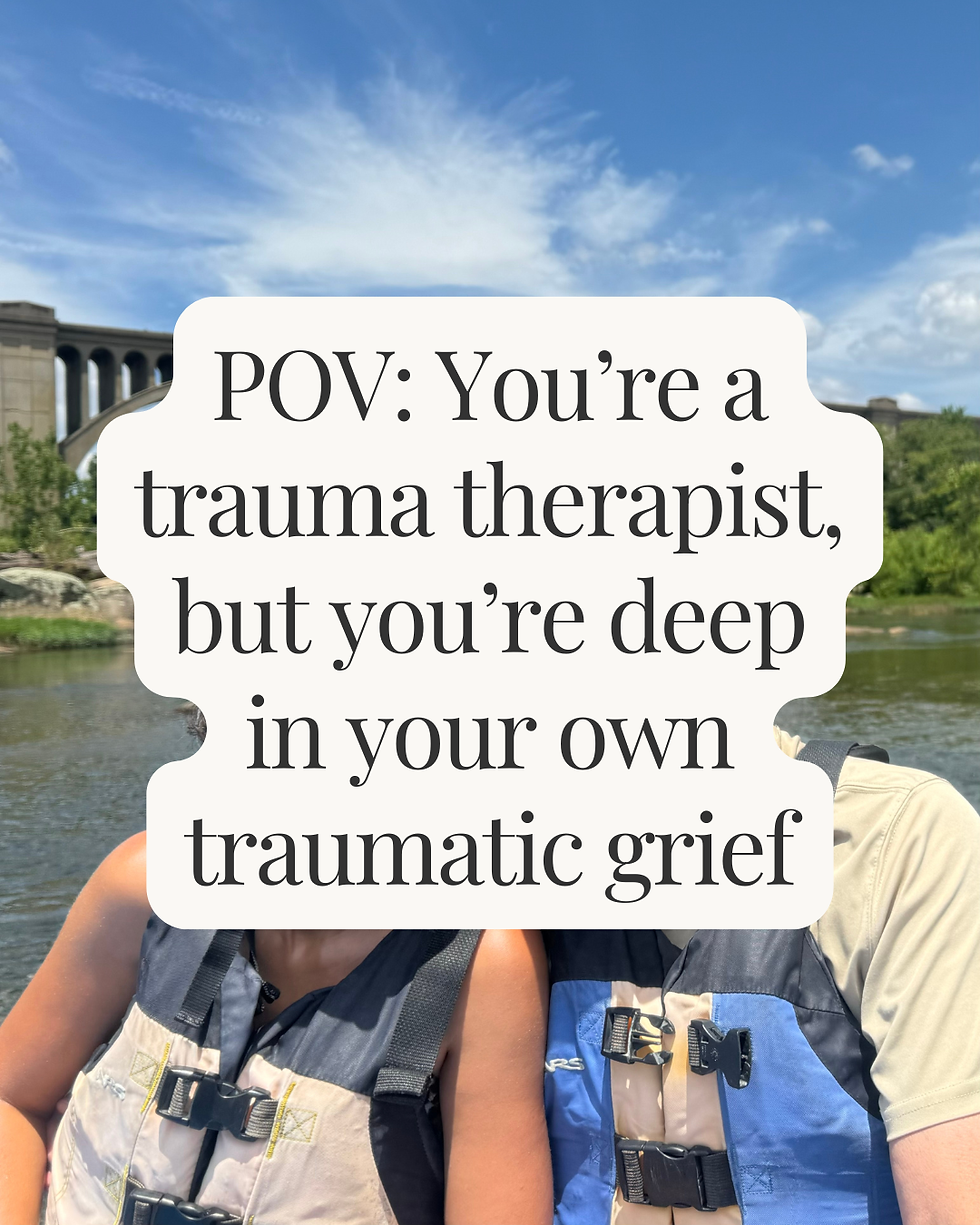3 Ways to Quickly Curb Anxiety
- Adrienne Loker

- Apr 2, 2024
- 2 min read
Updated: Apr 1, 2025
By Adrienne Loker, LCSW, EMDR, SE
#Anxiety disorders are the most common mental health concern in the world (World Health Organization, 2023), impacting over 30% of the US population (National Institute of Mental Health, 2017). Anxiety symptoms are unique to each person who experiences it, and can include: upset stomach, headaches, thought rumination, obsessive behaviors, trouble sleeping, chronic worry, panic, trouble breathing, and more.
Anxiety is a function of our fight/flight system. This system is the gas pedal in our brain. A slight engagement of the gas pedal allows us to be aware of our surroundings and respond to stimuli appropriately. However, an intense engagement of the gas pedal can send us into hyperarousal – meaning a fight/flight response.
If you’re one of the 30% who lives with anxiety, or if you know someone who does, here are some tools that can quickly apply the brake to decelerate the nervous system. These tools can also be used preventatively to prime brakes for easier accessibility.

1) Look out as far as you can see. If you’re inside, try and look out of a window. Bring attention to the shapes, textures, and colors that you see. Let your eyes be the boss and explore wherever it is that they want to go, noticing what’s within your peripheral vision just as much as your central vision. Spend as much time here as you need to. If it helps, let yourself count slowly to 30.
2) Slowly drop your head to one shoulder – slow enough that you can feel the sensations of this movement in your neck. Pretend that your head is a weight that is falling to the ground. Now gently roll your chin toward your chest, as though your head could possibly fall off. Keep rolling a full rotation to the other shoulder, then drop your head backward with your chin in the air and roll all the way to the shoulder you started with. Do this slowly as many times as you need.
3) Scan your body from the top of your head to the tips of your toes and find where your breath begins and ends. Don’t judge it, and don’t try to change it. Just notice the physical qualities of your breath: is it sharp or smooth? Is it shallow or deep? Listen to how it sounds when air enters and exits your body. If your breath is shallow, bring your attention to the space around your breath. Observe how it is for air to journey to your lungs, regardless of how shallow or deep it is.
These exercises are part of a #somatic approach to treating anxiety disorders. “Somatic” comes from the word “soma,” which means “body.” From a somatic lens, anxiety is caused by a thwarted flight response, trapping this high energy within the body. There are various ways a somatic approach aims to discharge this energy so that anxiety no longer negatively impacts functioning. The exercises above are orienting and containment exercises, which aim to activate dormant brain functions that counterbalance anxiety, and increase the capacity for the nervous system to be with an anxious experience.
Want some more support? Visit our website for guided somatic videos, workbooks, and articles: www.SeekingDepthToRecovery.com
.png)



Comments